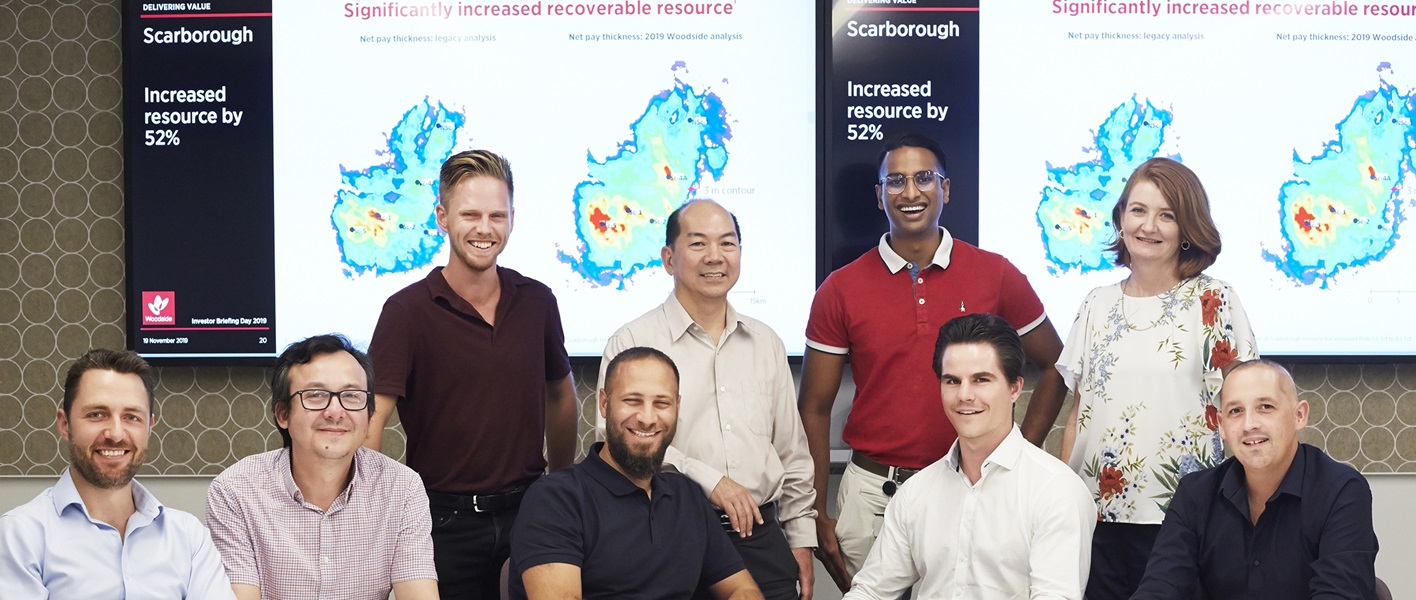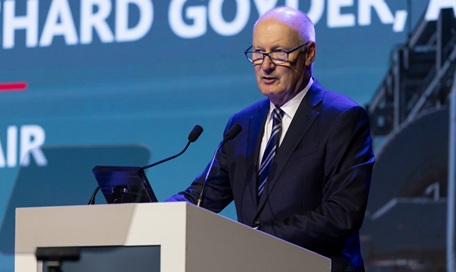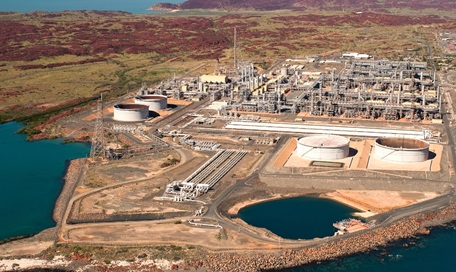Scarborough upgrade
The exciting announcement in Q4 of a massive upgrade in the Scarborough field’s potential resources is the result of years of dedicated research and teamwork.
Another pivotal factor for the success was the company’s determination to push the envelope rather than accept the traditional way of working.

In 2016, Woodside entered a new frontier in digital technology and geoscience innovation.
We became the first company to apply the power of Google Cloud computing to Full Wave Form Inversion (FWI) advanced seismic processing techniques. The completion of the 3D Thalin high resolution FWI project in Myanmar was run entirely on cloud computers.
This early work set the scene for the application last year of FWI to the Scarborough 3D dataset of 2004, where Woodside worked with a range of providers.
“This resulted in significantly improved imaging of the reservoir and led to the game-changing assessment for the resource,” says Ungsing Wong, principal geophysicist.
Chief geophysicist Fabio Mancini says Woodside’s Technology and Geoscience teams provided the “horsepower” to drive the breakthroughs, but many others were involved.
The result was a 52% increase in the gross contingent resource from 7.3 Tcf to 11.1 Tcf.
Woodside’s commitment to high-performance computing began with the acquisition of a suite of super computers named Moordiup in 2013.
The next year, working with Imperial College, London, Woodside applied FWI to 2D lines from the Exmouth basin in Western Australia.
“Results showed that FWI can produce excellent high-resolution seismic velocity models,” says seismic processing and imaging manager David Dickinson.
“We were one of the first to recognise the potential of performing FWI at high frequency and resolution.”
According to Fabio: “This early investment positioned Woodside as an industry leader when it completed the first in-house high-resolution 3D FWI on Google Cloud in 2016.”
Previous FWI pilots were limited to 2D seismic due to the magnitude of computing power required to crunch the numbers.
“For a field the size of Scarborough, Woodside would need more than 30 times all our internal computational capability to perform high resolution FWI,” says Fabio.
“Cloud computing represents an ideal solution for this challenge, offering almost unlimited computer power in a pay-as-you-go system.”
By moving to cloud computing, the full power of FWI processing was unlocked for future applications, with a range of providers.
The Scarborough FWI results were combined with Geoscience Technology (GT) expertise to deliver an updated characterisation of the reservoir, and the Scarborough subsurface team together with GT took a legacy dataset spanning several decades and performed an integrated assessment that was a game changer for the resource.
“The collaboration between technological innovation and regional geoscience knowledge highlights Woodside’s expertise and the value delivered from early adoption of technology,” says Yousof Hourani, Scarborough subsurface development manager.
Read the full Q4 2019 issue of Trunkline here.



